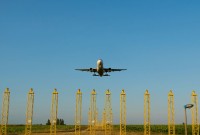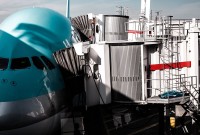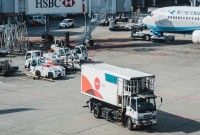- Home
- Business Processes
- Industry Knowledge
- Aerospace Industry
- Automotive Industry
- Banking Domain
- BFSI Industry
- Consumer/ FMCG Industry
- Chemicals Industry
- Engineering & Construction
- Energy Industry
- Education Domain
- Finance Domain
- Hospitality Domain
- Healthcare Industry
- Insurance Domain
- Retail Industry
- Travel and Tourism Domain
- Telecom Industry
- Leadership Skills
- eLearning
- Home
- Domain Knowledge
- Aerospace Industry
- Aerospace Industry: The Business Model
Aerospace Industry: The Business Model
In this article, we will discuss the value chain of the Aerospace Industry and will define the generic business model to understand the key process areas in the aerospace industry. This will provide you with a basic understanding of key activities in the industry.
The aerospace and defense industry value chain can be defined as follows:
Aerospace Research & Development:
The most important aspect of the aerospace industry is research and development. Aerospace firms big and small throughout the world employ designers, jet engineers, and others to work solely in the research and development of new aircraft and aerospace technologies. Research and development are crucial in the creation of aircraft to ensure safety, compliance, technological advances to stay ahead of the fierce competition.
Research and development have been responsible for the creation of new aerospace technologies like the Stealth bomber and satellite flight guidance systems. In product planning, ideas for new products based on market research, safety regulations, and legislation, as well as financial feasibility, are discussed. The R&D team continuously modifies or redesigns new products until they meet the required specifications.
Aerospace Engineering Design:
Flight vehicles are subjected to demanding conditions such as those produced by extreme changes in atmospheric pressure and temperature, with structural loads applied upon vehicle components. Consequently, they are usually the products of various technological and engineering disciplines including aerodynamics, propulsion, avionics, materials science, structural analysis, and manufacturing. The interaction between these technologies is known as aerospace engineering.
Because of the number of disciplines involved, aerospace engineering is carried out by teams of engineers, each having their own specialized area of expertise. The development and manufacturing of a modern flight vehicle is an extremely complex process and demands careful balance and compromise between abilities, design, available technology, and costs.
Aerospace engineers design, test, and supervise the manufacture of aircraft, spacecraft, and missiles. Aerospace engineers develop new technologies for use in aviation, defense systems, and space. Designers create conceptual sketches, clay models, or computer-aided 3-D designs of a new product. Then, they collaborate with suppliers and product managers to ensure that newly designed parts can be successfully integrated into the design specifications of an aircraft, missile, or another product model. Finally, a prototype of each part is built. The team troubleshoots any potential problems and conducts the required tests. Since the aerospace industry is very design intensive, on average an OEM takes about five years to design a completely new model.
Aerospace Manufacturing:
The global commercial aerospace market has few prime contractors who manufacture aircraft and engines. There are numerous small and medium-sized firms that supply components and subsystems. Typically the aerospace value chain is characterized by engine manufacturers and system suppliers firms who are in exclusive supplier contracts with aircraft manufacturers. Once the engineering design is ready and the prototype is approved, the next step in the aerospace value chain is the aerospace manufacturing process. Raw materials are requisitioned from suppliers, purchases, and tested and this process results in the production of the final part.
Aerospace Assembly and Testing:
The lead times in aircraft manufacturing are typically very long. According to Boeing, building a commercial jet aircraft takes about a year on an average. The tooling requirements are very critical and can be almost one third to two-thirds of the total development costs. The recurring cost thereafter for the aerospace companies comprises of maintenance costs including tool replacement. All the requisite finished parts needs for the final product are either ordered or procured from suppliers, or parts are produced in-house in the earlier step. They are used to assemble the final product. The final product is then assessed for quality; if it doesn't meet the required standards, it is reworked.
Sales and Leasing:
The life cycle of a typical commercial aircraft spans about 30 years. There is a trend in the aerospace industry for both outright sales and leasing of the aircraft. OEM makes logistical decisions about the transportation of the products from warehouses to the customer. Logistics and contracts to purchase or lease the products are finalized at this step.
After Market:
As a current trend, the aftermarket services are being pushed back to the suppliers since the OEMs increasingly understand that this is not their core competence. The services technologies are also becoming increasingly advanced which means that a specialist in this area would be able to manage this area much more competently. OEMs have to make sure that service engineers and technicians are available to meet any after-sales support and service needs. Customers are also free to contract the MROs of their choice for future maintenance and repair needs.
Suggested Reading and Resources
Related Links
You May Also Like
-
Civil Aerospace: Civil Aircraft Manufacturing Industry
This article discusses sectors within the Civil Aerospace Sector and its subsectors, products, and services. This article provides an overview of the definition, industry products, industry activities, and global locations.
-
Civil Aerospace: Commercial Avionics Industry
Commercial avionics refers to cockpit electronics and airborne equipment, although it doesn't include antennas, recorders, or other passenger-only cabin systems. Avionics is referred to denote the electronic systems that are utilized in aircraft.
-
Aerospace Industry: The Business Model
In this article, we will discuss the value chain of the Aerospace Industry and will define the generic business model to understand the key process areas in the aerospace industry. This will provide you with a basic understanding of key activities in the industry.
-
Key Sectors of Aerospace and Defense Industry
Understand the categorization of the aerospace industry to various sectors based on the services it currently provides. Understand the key constituents under these sectors and activities under each of these sectors.
-
Civil Aerospace - Commercial Simulation and Training
Training people how to operate and maintain today’s sophisticated aircraft as well as on-board and ground support systems can be very complex and costly. To be effective, the training environment must accurately simulate the features and capabilities of the actual systems in a wide range of operating scenarios. Commercial modeling, visual simulation, flight simulation, and computer-based training are the key methods used by this subsector.
-
Aerospace Industry - The Competitive Landscape
This article provides an overview of the competitive landscape of the aerospace industry. Read how the compaction is shaped up across the US and the globe, followed by a detailed discussion of the top 5 players in the sector in terms of revenue.
-
Challenges in the Aerospace and Defense Industry
New market dynamics are dramatically changing the way A&D companies serve their customers, collaborate with partners, and take ideas and solutions to the market. Given below are several vitally important challenges that are currently confronting the aerospace and defense industry and strategies to mitigate them.
-
Civil Aviation Sector – A brief History
The civil aviation sector has transformed itself during the last hundred years. There has been massive technological development in passenger traffic and comfort and now the civil aviation industry accounts for approximately 30% of the overall aerospace industry. A brief account of civil aviation history is presented in this article.
-
Civil Aerospace: Maintenance, Repair & Overhaul (MRO)
This subsector under the civil aerospace industry includes the maintenance, repair, and overhaul (Known as MRO) of civil aircraft and aircraft components. This includes line and heavy maintenance of civil aircraft, as well as repair and overhaul of all parts of an aircraft, including engines, electronic components, and avionics, instruments, and aircraft structures.
-
Civil Aerospace Sector - Sector Profile
In this article, we will discuss the four important sub-sectors of the Civil Aerospace Sector namely “Civil Aircraft Manufacturing”, “Commercial Avionics”, “MRO” and “Commercial Simulation & Training”.
Explore Our Free Training Articles or
Sign Up to Start With Our eLearning Courses

About Us
Learning
© 2023 TechnoFunc, All Rights Reserved









